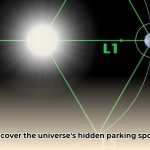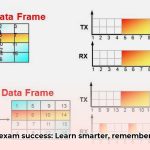Imagine the universe murmuring secrets in the language of radio waves – incredibly powerful bursts, each lasting only milliseconds, yet originating from billions of light-years away. This is the realm of Fast Radio Bursts (FRBs), a cosmic enigma that has captivated scientists for years. This article delves into the heart of FRBs, exploring their origins, the distinct characteristics of repeating and non-repeating bursts, and the cutting-edge technologies used to detect these faint signals across the vast expanse of space. Prepare for a journey into the fascinating world of astrophysics, where we attempt to decipher these bizarre and potent bursts from the depths of the cosmos.
Unveiling the Enigma: Fast Radio Bursts and Their Cosmic Secrets
Envision a burst of radio waves so intense it can traverse billions of light-years in mere milliseconds. This is a Fast Radio Burst (FRB), among the most perplexing phenomena in modern astrophysics. These fleeting messages from deep space hold the potential to unlock some of the universe’s most profound secrets, offering clues about exotic cosmic events and the very fabric of the cosmos. Let’s embark on a journey to explore these enigmatic signals, uncovering their unique properties, origins, and the mysteries they hold.
Decoding the Whispers: What Are These Mysterious Millisecond Messages?
Fast Radio Bursts (FRBs) are characterized by their incredibly short duration and immense energy. Detected across vast cosmic distances, often billions of light-years away, these bursts are intense pulses of radio waves that last only a fraction of a second. To put their energy into perspective, some FRBs release as much energy in a millisecond as the sun emits in an entire day. This extraordinary power packed into such a brief moment makes FRBs a compelling subject of study for astrophysicists.
Scientists employ highly sensitive radio telescopes to detect these cosmic whispers. These instruments are designed to pick up faint radio signals from across the universe, acting as sophisticated ears tuned to the cosmos. When an FRB occurs, it appears as a sudden, bright flash of radio waves, standing out against the background noise of the universe. The Canadian Hydrogen Intensity Mapping Experiment (CHIME) and the Australian Square Kilometre Array Pathfinder (ASKAP) are at the forefront of FRB detection, constantly scanning the skies for these fleeting signals.
Pinpointing the Source: Where Do These Cosmic Fireworks Actually Come From?
The origin of FRBs remains a significant puzzle in astrophysics, but several compelling theories have emerged. One of the most prominent explanations involves magnetars, which are neutron stars with exceptionally strong magnetic fields. These fields are trillions of times more powerful than Earth’s, making magnetars among the most magnetic objects known in the universe.
One compelling theory suggests that starquakes, sudden shifts in a magnetar’s crust, could release immense amounts of energy, resulting in FRBs. These starquakes would be akin to colossal earthquakes on incredibly dense, magnetic stars. However, magnetars are not the only potential source of FRBs. Other proposed origins include the collision of neutron stars, the collapse of massive stars into black holes (known as blitzars), and the merging of white dwarfs. The diversity in FRB characteristics suggests that multiple mechanisms may be responsible for creating these bursts.
Repetition vs. Cataclysm: Repeating vs. One-Off Events: More Clues to the Puzzle
Adding another layer of complexity, FRBs are observed in two distinct forms: repeating and non-repeating. Repeating FRBs emit multiple bursts over time, while non-repeating FRBs appear only once. This difference has led to considerable debate among scientists, as it suggests different underlying mechanisms or source properties.
Repeating FRBs may originate from more stable sources capable of producing multiple bursts, such as magnetars experiencing repeated starquakes. The exact cause of the repetition is still unknown, but it provides valuable clues about the source environment and emission mechanisms. In contrast, non-repeating FRBs might be the result of catastrophic events, such as the collision of neutron stars or the collapse of a massive star, which would only occur once. The intergalactic medium through which these bursts travel may also play a role in determining whether an FRB repeats, influencing the signal’s properties and detectability.
Tuning In: How Do We “Listen” to These Cosmic Whispers?
Detecting FRBs requires advanced technology and sophisticated observational techniques. Massive radio telescopes, such as CHIME and ASKAP, are designed to capture these elusive signals. These telescopes systematically scan large areas of the sky, collecting and processing vast amounts of data.
The challenge lies in distinguishing genuine FRB signals from background noise and terrestrial interference. Sophisticated computer algorithms are employed to filter out unwanted noise and identify potential FRB candidates. These algorithms analyze the data for specific characteristics, such as the burst’s duration, intensity, and frequency spectrum, to differentiate true FRBs from spurious signals.
Lingering Questions: The Big Unknowns: What’s Next in FRB Research?
Despite significant progress, numerous questions about FRBs remain unanswered. Why do some FRBs repeat while others do not? Is this difference due to variations in the sources themselves or limitations in our ability to detect repeated signals? What percentage of FRBs repeat, and what does this tell us about their origins and underlying mechanisms? Are there other, as-yet-unknown sources responsible for producing these bursts?
The answers to these questions have the potential to revolutionize our understanding of the cosmos. FRBs could provide valuable insights into the early universe, the distribution of dark matter, and the existence of exotic celestial objects that we have yet to imagine. Furthermore, understanding the role of dispersion measure in FRBs could shed light on the location and nature of these enigmatic bursts.
Technological Advancements: The Future of FRB Research: Tuning In to the Cosmos
The future of FRB research is brimming with potential. Scientists are developing even more sensitive telescopes, including the Square Kilometre Array (SKA), which promises to detect a significantly larger number of cosmic signals. The SKA, with its unprecedented sensitivity and wide field of view, will be transformative in its ability to detect and study FRBs.
Combining advanced data analysis techniques with observations across multiple wavelengths of light will provide a more comprehensive understanding of FRBs. By studying FRBs across the electromagnetic spectrum, scientists can gain insights into the physical processes occurring in their sources and the environments through which their signals propagate.
The ongoing quest to solve the mystery of FRBs exemplifies humanity’s insatiable curiosity and our relentless pursuit of knowledge about the universe. As our ability to listen to the cosmos improves, we are poised to uncover even more astonishing secrets hidden within these powerful bursts of energy. The journey to understanding FRBs is far from over, and the discoveries that await are likely to reshape our understanding of the universe.
Actionable Insights: Fueling Future Discoveries
| Stakeholder Group | Short-Term Goals (0-1 Year) | Long-Term Goals (3-5 Years) |
|---|---|---|
| Astronomers/Physicists | Enhance FRB detection algorithms, optimize telescope performance and data processing. | Construct next-generation telescopes (SKA), conduct comprehensive multi-wavelength surveys, develop advanced simulations. |
| Funding Agencies | Provide funding for upgrades to existing telescopes, support data analysis initiatives, and promote collaboration. | Invest in ambitious telescope projects, and theoretical studies of FRBs, foster international partnerships. |
| Space Agencies (e.g., NASA) | Encourage international collaboration in FRB research. | Design and deploy dedicated space-based FRB observatories, enabling continuous monitoring and high-precision measurements. |
Cracking the Code: How to Differentiate Between Repeating and Non-Repeating Fast Radio Bursts
One of the most captivating aspects of Fast Radio Bursts (FRBs) is the distinction between those that repeat and those that do not. This difference offers invaluable clues about their origins and the underlying physical processes that generate these powerful cosmic signals. How can astronomers distinguish between these two types of FRBs, and what insights can we glean from their contrasting characteristics?
Key Takeaways:
- FRBs are powerful bursts of radio waves originating from distant galaxies.
- The distinction between repeating and non-repeating FRBs is crucial for understanding their origins.
- The energy distribution of FRBs provides essential clues about their emission mechanisms.
- High-energy bursts exhibit unique characteristics, potentially linked to distinct astrophysical processes.
- Understanding these differences aids astronomers in pinpointing the sources of these enigmatic signals.
Understanding the Phenomenon: What are Fast Radio Bursts?
Fast Radio Bursts (FRBs) can be envisioned as cosmic lighthouses flashing across the universe, emitting intense radio waves instead of light. These energetic events occur in mere milliseconds, yet possess the energy equivalent to the sun’s output over many years. Scientists detect these fleeting signals from distant galaxies using powerful radio telescopes, tuning in to the whispers of the cosmos.
Potential Sources: Where Do FRBs Come From?
The origins of FRBs remain a cosmic puzzle, with several compelling theories under investigation. Leading explanations focus on highly magnetized neutron stars known as magnetars. These incredibly dense remnants of exploded stars possess magnetic fields trillions of times stronger than Earth’s. Magnetar flares could potentially be the source of some FRBs. Another promising hypothesis involves neutron star mergers, the cataclysmic collision of two incredibly dense stars, which could generate bursts of such magnitude. The variance between repeating and non-repeating FRBs may be related to the different types of sources producing them.
Distinguishing Factors: How to Differentiate Between Repeating and Non-Repeating Fast Radio Bursts
The key to differentiating FRBs lies in their behavior. Some FRBs are “one-offs,” appearing only once in our telescopes’ view, while others are repeat offenders, emitting bursts multiple times. This distinction is crucial for understanding their origins. Repeating FRBs suggest a source capable of multiple powerful emissions, such as a magnetar. In contrast, non-repeating FRBs might stem from more destructive events, such as one-time cataclysms like neutron star mergers. The environment surrounding the FRB source may also influence whether it repeats.
Energy Patterns: The Energy Distribution Puzzle
A critical aspect of distinguishing between repeating and non-repeating FRBs is their energy distribution. Studies have revealed variations in the way energy is released across different bursts. High-energy FRBs, for example, may exhibit unique patterns, potentially suggesting distinct emission processes. Analyzing this energy distribution helps determine whether a magnetar flare or a neutron star merger best explains the observations.
Advanced Techniques: The Science of FRB Detection and Analysis
Detecting FRBs requires highly sensitive radio telescopes capable of capturing faint signals from vast distances. Data analysis involves detailed studies of the bursts’ properties, including their duration, frequency, and energy distribution. Sophisticated algorithms are employed to filter out noise and identify genuine FRB candidates.
The Unresolved Questions: Open Questions and Future Research
Despite significant progress, many mysteries remain. Why do some FRBs repeat, while others do not? What mechanisms generate these extreme bursts? What can FRBs teach us about the universe’s evolution and the physics of extreme environments? Ongoing research, involving increasingly powerful telescopes and improved data analysis techniques, is crucial to answering these fundamental questions. Astronomers are actively searching for more FRBs, hoping to piece together the puzzle of these enigmatic cosmic signals.
Cosmic Cartography: Fast Radio Burst Dispersion Measures: Probing the Intergalactic Medium
Fast Radio Bursts (FRBs) serve as valuable probes of the universe, particularly the intergalactic medium (IGM). By analyzing the dispersion measures (DM) of FRBs, scientists can gain insights into the composition and structure of the IGM. This technique works by measuring how much the radio waves from an FRB are dispersed as they travel through space, which is affected by the amount of matter they encounter. This allows scientists to study the otherwise invisible IGM.
Key Takeaways:
- Fast Radio Bursts (FRBs) are powerful tools for studying the universe’s intergalactic medium (IGM).
- Dispersion measures are crucial for understanding the IGM’s composition and evolution.
- While much progress has been made, uncertainties remain regarding the sources of FRBs and the precise interpretation of their dispersion measures.
- Combining dispersion measure (DM) data with scattering time (τ) data enhances redshift estimations and cosmological parameter constraints.
- Future research will focus on refining models, improving observations, and developing better analytical techniques.
Unveiling the Phenomenon: What are Fast Radio Bursts?
Imagine a cosmic firework that explodes with radio waves instead of light—that’s a Fast Radio Burst (FRB). These incredibly bright bursts of radio emission last only milliseconds, yet pack the energy equivalent of the Sun’s output in seconds. Scientists detect them using radio telescopes, which are essentially giant antennas listening to the whispers of the cosmos. The mystery lies in figuring out what causes them.
Measuring Cosmic Distances: Peering Through the Cosmic Fog: Dispersion Measures
FRBs are valuable because of their interaction with the space between galaxies—the intergalactic medium (IGM). As the radio waves from an FRB travel vast distances, they encounter electrons in the IGM, causing a phenomenon called dispersion. This means that different wavelengths of the radio signal arrive at different times. The delay, measured as dispersion measure (DM), is directly proportional to the number of electrons the signal encountered.
Like navigating a fog, the denser the fog (more electrons), the more your signal is delayed. By measuring this delay, we can estimate the electron density along the FRB’s path and probe the IGM’s density and distribution. This reveals clues about the universe’s large-scale structure and evolution.
Understanding the Diversity: Repeating vs. Non-Repeating FRBs: A Cosmic Puzzle
Some FRBs repeat, emitting bursts multiple times, while others flare only once and are gone. This difference hints at varying origins. Repeating FRBs might stem from highly magnetized neutron stars called magnetars within their host galaxies, while one-off bursts might signify more cataclysmic events, like the merger of two neutron stars. The full picture is still actively investigated. Studying the dispersion measures of repeating and non-repeating FRBs could reveal more about their nature.
Challenges and Complexities: Unraveling the DM: Challenges and Insights
While dispersion measure analysis is a promising technique, it’s not without its complexities. The DM isn’t solely determined by the IGM. The signal also passes through the Milky Way’s own interstellar medium (ISM) and possibly the host galaxy of the FRB itself. Subtracting these contributions to accurately isolate the IGM DM is crucial but introduces unavoidable uncertainties.
Furthermore, the relationship between DM and redshift (the distance of the FRB) isn’t always straightforward. It’s affected by factors like the distribution of electrons in the IGM, the complex interplay of gas and dark matter, and even the initial energy of the FRB itself.
Combining Data: The Path Forward: Synergistic Approaches
Current research uses sophisticated simulations, such as IllustrisTNG, to model the distribution of electrons in the IGM. While incredibly useful, these simulations have inherent limitations. Combining DM measurements with another observable, the scattering time (τ), offers significant potential. The scattering time is how long it takes for the radio waves to spread out as they pass through the medium. Combining DM and τ could significantly improve redshift estimations and refine our understanding of the IGM.
The Future is Bright: The Future of FRB Cosmology
The field of FRB research is burgeoning. Larger and more sensitive radio telescopes promise to detect many more events, providing a richer dataset to refine our models and address uncertainties. Combining this wealth of data with new analytical techniques could revolutionize our understanding of the IGM. The next few years will likely witness considerable progress in disentangling the complexities of FRBs and harnessing their full potential as cosmological probes.
Cosmic Rhythms: Periodic Patterns in Repeating Fast Radio Bursts: Insights into Emission Mechanisms
The discovery of periodic patterns in repeating Fast Radio Bursts (FRBs) has opened new avenues for understanding these enigmatic cosmic phenomena. One notable example is FRB 180916.J0158+65, which exhibits a remarkable 16.35-day cycle in its bursts. What are the implications of this discovery, and what potential mechanisms could explain such periodic behavior?
Key Takeaways:
- Repeating Fast Radio Burst (FRB) 180916.J0158+65 shows a surprising 16.35-day cycle in its bursts.
- This discovery challenges our understanding of FRBs and their origins.
- The exact reason for this periodic behavior remains a mystery. Several possibilities exist, but more research is needed.
- This finding highlights the power of dedicated FRB observation campaigns and the need for advanced telescopes.
The Fundamentals: What are Fast Radio Bursts?
Imagine a cosmic firework that consists of a brief but incredibly powerful burst of radio waves originating from billions of light-years away. That’s a Fast Radio Burst (FRB). These mysterious events unleash more energy than our Sun does in a day, yet they last only milliseconds. For years, their origin was a complete enigma. Detecting them is like hearing a whisper across the cosmos.
The Repeating Kind: The Puzzle of Repeating FRBs
While most FRBs are one-off events, some repeat, hinting at a more predictable behavior from their source. This repetition is crucial, offering scientists a chance to study these fleeting signals in more detail.
A Cosmic Clock: A Breakthrough: The 16.35-Day Rhythm
FRB 180916.J0158+65 changed everything. This repeating FRB displays a remarkable pattern: its bursts appear in a regular 16.35-day cycle. This suggests an underlying mechanism – some kind of cosmic clock – governing its energetic outbursts. Is it an intrinsic property of the source? Or is something else modulating the signals?
Possible Explanations: Possible Explanations: The Great Cosmic Debate
Several theories are competing to explain this periodicity. One idea involves a rapidly rotating neutron star, a magnetar, whose powerful magnetic field might periodically focus its energy into bursts. Alternatively, a binary system – two stars orbiting each other – could cause the FRB’s emissions to be periodically blocked or amplified. Gravitational lensing, where the gravity of a massive object bends the FRB’s radio waves, is another possibility, introducing a periodic distortion affecting signals’ arrival. What other potential explanations could account for the observed periodic patterns?
The Road Ahead: What’s Next?
We’ve just scratched the surface. The discovery of this 16.35-day periodicity is exciting, but it also raises even more questions. Are other repeaters showing similar cycles? What causes this specific timing? Longer observation runs, using more powerful telescopes such as CHIME, will be vital in unlocking the remaining mysteries of FRBs. The future holds more puzzles for us to solve – but at least, now we have a better idea where to look for answers!
















